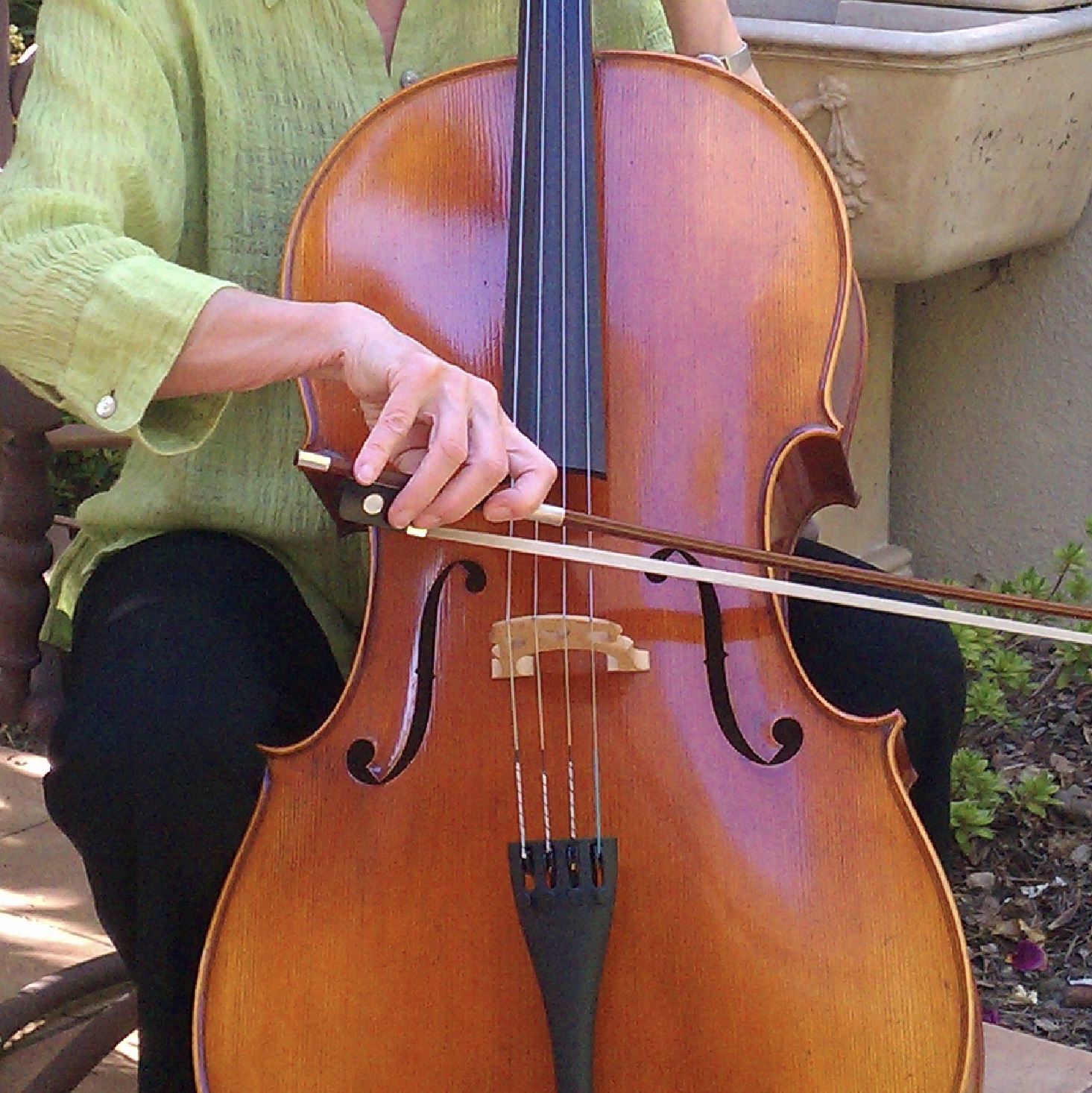
At age 70 I began an improbable journey—learning to play the cello. It’s one thing to imagine straddling a cello and bowing it lovingly but it’s another thing entirely to execute it reliably, while making lovely sounds, especially as an older adult beginner.
When I embarked on playing a string instrument I was well intended and studious, taking weekly lessons and practicing daily. My goal was to start a good habit. But it proved difficult to maintain because with an adult ear I could hear the deficiency between my playing and what might be produced on the strings by any eight-year-old with a few lessons under her belt.
As time went by, the novelty of being a novice musician wore off, replaced by lethargy. I began to avoid practice time. My bargaining began. I promised myself that if I would sit with the cello for 15-20 minutes daily, I would satisfy my commitment to myself, as no one else really cared. If I chose to play or decided instead to stare out the window, that was my choice but I couldn’t disappoint the cello. And so I did show up and did practice. But beautiful music doesn’t come from such an arrangement, shrouded with tension and angst. Still, I persevered, and time passed. The delicate balance between wish and follow-through persisted but any pleasure was offset by a clenched jaw and gritting teeth.
Though I muscled through and never gave up practicing, or my daily commitment even when the music became more difficult, I knew that I needed to make some adjustments to increase pleasure and reduce torture. For the first couple of years into my cello routine, I’d tried to practice for 45 minutes daily, first thing in the morning. Then I remembered from my training as a psychologist that massed learning (a single block of 45 minutes) is less effective than spaced learning (two, twenty-five minute sessions) for adults. That gave me an idea which I toyed with in various forms like 25 minutes in early AM followed by 20 minutes around 5 PM. Ultimately I settled on 30 minutes in early morning and 15 minutes in early evening. That strategy helped but not enough.
Several years into my cello journey it occurred to me that I could sweeten the deal so that I would actually look forward to practicing by coupling practice with something else that was highly desirable to further reinforce the habit. I decided to reward my early evening efforts with a glass of wine perched on the little glass table where I kept my tuner and metronome, close enough to grab anytime I needed a quick break. It did help me get to, and through, the second practice of the day—and delightfully. Nothing wrong with rewarding effort, the psychologist in me acknowledged.
Feeling successful in resolving my late-in-the-day struggle I thought about ways to reward my early morning practice. My very first idea worked. I’d pair my morning practice with my morning coffee—setting my mug on that same little table that later in the day would hold my wine glass. I began to enjoy the time I spent with my cello more and my resistance to showing up for practice was greatly diminished. But I had one more trick up my sleeve that in hindsight seems so obvious.
The room where I practice is cold and drafty, even in summer, but it’s the best place to practice because of the acoustics as well as household logistics. Enter a space heater sitting a foot away from me and my cello. Yes, being warm while practicing proved to be a definite incentive and the three motivators, coffee, wine and warmth, reinforced the practice habit just as I’d hoped. Now nine years into playing I’ve improved enough to pay with others in a string quartet (two violins, a viola and a cello), a string trio (two violins and cello) and a piano trio (piano, violin and cello). Mind you, none of us musicians will be performing publicly anytime soon but it’s just what I had in mind when I envisioned my musical foray almost a decade ago. And in the future if my cello practice time seems too laborious, I’ll find even more incentives or rewards. Pavlov would be proud!

